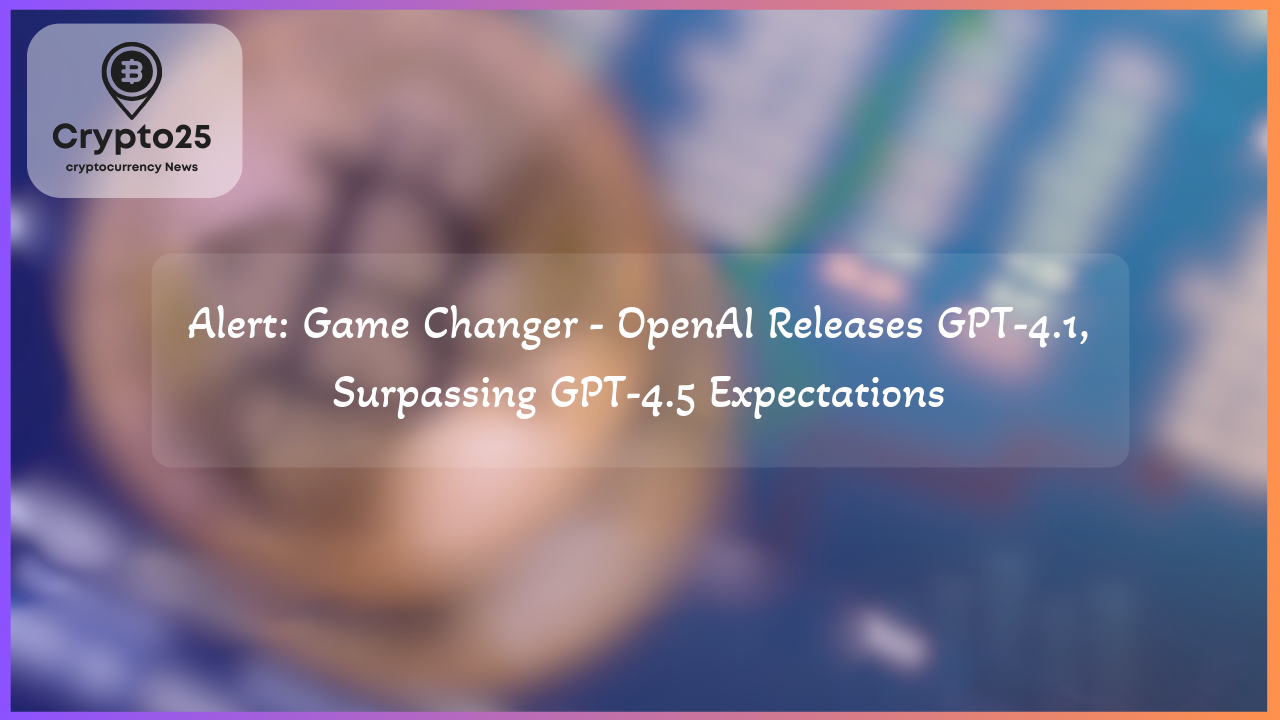
OpenAI recently introduced GPT-4.1, a cutting-edge addition to its generative AI suite that includes three distinct models: standard GPT-4.1, Mini, and Nano variants. Featuring groundbreaking enhancements like a one-million-token context window, this latest innovation is designed to fulfill the needs of developers in handling complex datasets, such as entire codebases or extensive documents, with unmatched efficiency. Here’s what you need to know about GPT-4.1’s capabilities and its implications for AI.
### GPT-4.1 Revolutionizes Long Context AI Models
The arrival of GPT-4.1 has marked a significant leap forward in the field of artificial intelligence, primarily due to its ability to process up to one million tokens in a single operation. For context, traditional language models struggle with smaller token windows, but GPT-4.1 breaks those limitations by processing the equivalent of small novels or entire organizational codebases without missing a beat. The standout Nano variant, touted as OpenAI’s “smallest, fastest, and cheapest model ever,” provides a highly efficient option at just $0.12 per million tokens.
OpenAI has also addressed pricing concerns with this update by ensuring that developers will not experience an increased cost for utilizing the expanded token window, a feature that expands access across industries. This competitive feature aims to attract those needing high-performing AI for computationally intensive tasks like analyzing NASA datasets or extensive log files.
From enhancing instruction-following capabilities to reducing computational costs by 26% compared to previous models, GPT-4.1 underscores OpenAI’s strategy in providing smarter solutions without compromising on affordability.
### Significant Performance Upgrades in the GPT-4.1 Ecosystem
For software developers and enterprises, GPT-4.1 brings more than just token window upgrades. In coding benchmarks, such as SWEBench, GPT-4.1 achieved a remarkable 55% accuracy—up from GPT-4o’s 33%—making it a valuable asset for tackling programming challenges with precision. During real-time demonstrations, the model proved capable of generating entire web applications while maintaining near-perfect performance on tasks involving hundreds of thousands of tokens—including a comprehensive analysis of NASA’s server log files from 1995.
OpenAI has elevated the quality of instruction-following and formatting compliance within GPT-4.1. Whether following complex user commands or meeting intricate formatting requirements, the enhanced functionality provides a user experience that exceeds previous models. According to Michelle, OpenAI’s post-training research lead, GPT-4.1 eliminates common issues such as creative misinterpretations of directives—solidifying its role as a dependable tool for diverse use cases.
| Feature | Details |
|---|---|
| Token Limit | 1 Million |
| Accuracy (SWEBench Benchmark) | 55% |
| Cost Efficiency | 26% Cheaper Than GPT-4o |
These improvements are particularly critical in sectors where precision and scalability are non-negotiable. Financial analysts, researchers, and developers who rely on AI for processing unstructured datasets now have a better-suited tool for their operations.
### OpenAI’s Naming Quandary and the Future of Generative Models
Interestingly, GPT-4.1 was unveiled only weeks after the release of GPT-4.5, a timeline that has raised questions regarding OpenAI’s naming conventions. Industry observers have likened the naming sequence to “counting out of order” due to the unconventional updates in versioning, such as the earlier GPT-4o. According to Kevin Weil, OpenAI’s product lead, the naming decision for GPT-4.1 was intentional but admittedly cryptic, with cryptic humor forming part of OpenAI’s tradition.
Moving past the naming curiosities, OpenAI is set to deprecate GPT-4.5 in favor of the superior GPT-4.1 model. This decision highlights the company’s focus on delivering streamlined options that optimize GPU availability, an issue of growing relevance amid the global semiconductor shortage. Developers using GPT-4.5 are advised to transition within the next three months, as OpenAI reallocates computing resources to support its latest innovation.
Given the rapid pace of OpenAI’s advancements, speculation is rife on what’s next. Some have mused whether future models will be named after irrational numbers like π or square roots before the year’s end. Humorous naming aside, the iterative development of the GPT series demonstrates the growing reliability and versatility of large language models.
The GPT-4.1 suite is now accessible via API and in OpenAI’s developer playground. Although not yet integrated into ChatGPT’s user-facing interface, broader availability is a possibility for future iterations. As businesses and developers explore GPT-4.1, it’s clear that OpenAI’s commitment to pushing the technical boundaries of AI remains unwavering—delivering scalable, intelligent solutions for a highly dynamic market.
With this rapid evolution in generative AI, we anticipate more groundbreaking innovations ahead, ensuring that GPT-4.1 is just one step in OpenAI’s commitment to shaping the future.
